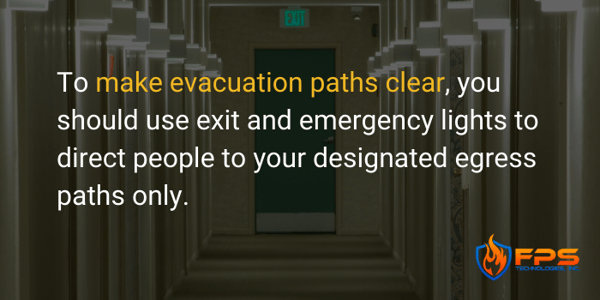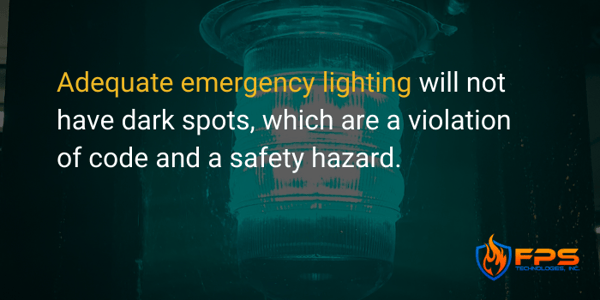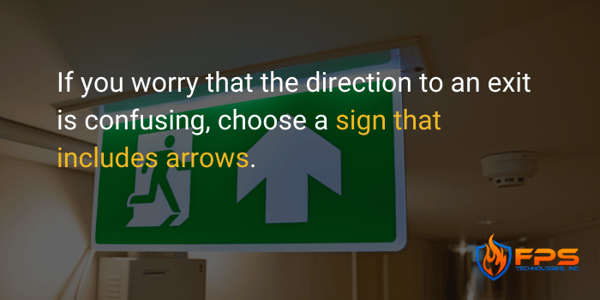In an emergency, it’s essential that your building have functional, easy to find emergency and exit lights. Staff and patrons need to be able to quickly identify exits and, if necessary, alternate routes to evacuate your facility. In addition to exit signs, you should also have emergency lighting that illuminates walkways to reduce the chance of injury in a power outage.
It can be challenging to determine exactly where you need to install these signs and lights to maximize safety and stay in compliance with various governing bodies. It’s common for businesses to “over light” their buildings, but that can actually make it harder for people to find their way out of your building. You don’t actually need emergency and exit lights everywhere in your building. To make evacuation paths clear, you should use exit and emergency lights to direct people to your designated egress paths only.

Luckily, we’ve compiled a list of the best places to install these components to keep your employees and patrons safe while also complying with regulations.
Where to Install Emergency Lighting
There are two primary locations to install emergency lighting:
- In any location or path that a person might use to access an emergency exit, and
- Inside any interior rooms or storage areas
Emergency lights should provide clear paths through all hallways, corridors, and staircases that are on an egress path so people can safely navigate them and avoid injury. Any area where patrons may be congregating or employees may be working should also have emergency lighting. That means rooms without windows, such as offices, bathrooms, or storage closets, or any interior room where patrons might be, like conference rooms or lobbies.
In many cases, a single light is not adequate to brighten an entire room. Adequate emergency lighting will not have dark spots, which are a violation of code and a safety hazard. During an on-site facility inspection, your licensed FPS technician will determine the best locations for emergency lights and the proper spacing to eliminate dark spots.

Where to Place Exit Signs
There are two important things to consider when placing your exit signs:
- Where are the paths that lead to your building’s emergency exit(s)?
- Where are there paths that lead to a dead-end (such as a locked office or conference room)?
Your goal is to make the designated egress path(s) out of your building obvious. The signs should point people to the correct path, and they should also mark any hallways or paths that do NOT lead to an exit. Consider investing in signs that read “EXIT” and “NOT AN EXIT” to prevent any confusion.
Exit signs should be easy to see from any door that opens to a hallway along an exit path. If a hallway has a turn in it, then you’ll need an additional sign that a person can easily see once they reach the turning point.
If you worry that the direction to an exit is confusing, choose a sign that includes arrows. Remember, during an emergency, people are scared and may panic. Clear exit signs reduce the chances of injury.

You also need signs with backup batteries so that, even in a power outage, the signs will safely guide people out of your building.
Is it Time to Improve Your Emergency and Exit Lights?
Our technicians are experts in identifying the best places for exit signs and emergency lighting. If you’re planning to remodel your facility or just want to improve your safety, get in touch with FPS today.


